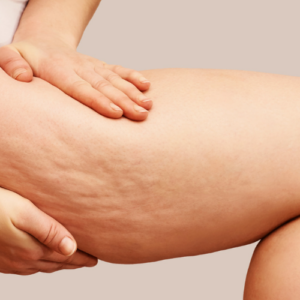
Feeling and looking comfortable is a big part of feeling pretty or handsome. However, if you suffer from pigmentation, feeling comfortable in your skin can be a huge ask. Skin pigmentation is a condition that can cause an individual to have self-esteem and confidence issues.
Usually, skin pigmentation is more common among women. If you suffer from skin pigmentation, it is entirely likely that you have resorted to colour correctors, foundation or concealers to hide your uneven skin tone. Of course, pigmentation can be concealed by using makeup. However, it is not the same as feeling confident enough to step out of the home without makeup.
This article contains an in-depth look at skin pigmentation. Remedies that can help you with your confidence and facial appearance are also outlined in this article. Keep reading to see how to get rid of your uneven skin tone.
What is skin pigmentation?
It is referred to as hyperpigmentation by in the cosmetic and medical aesthetics industry. Pigmentation is a skin condition that darkens random patches of the skin. These patches do not follow a specific pattern; they can be small or big.
Skin pigmentation is not physically harmful or uncomfortable. However, it may be a sign of a deeper underlying medical problem and causes you to look unhealthy as well as older.
Have you ever wondered how pigmentation comes about? Your skin gets its natural tone from cells called melanocytes. Melanocytes are in charge of melanin production. When the melanocytes in your skin get damaged, they produce melanin excessively, a situation that causes your skin to darken in patches.
What causes pigmentation?
Pigmentation can develop in your skin for a number of reasons. Some of the most common causes include:
- Overexposure to the sun
- Skin damage brought on by injury
- Genetic factors
- Hormonal changes
- Allergic reactions
- Improper hair removal
Types of pigmentation
Depending on the causative factors, skin pigmentation can be divided into three broad groups. They are:
1. Melasma
Melasma is a form of pigmentation that is peculiar to women. If you are a woman with dark skin colour, then you are highly susceptible to melasma. Discoloration brought on by melasma usually occurs on the forehead, cheeks, nose or above the mouth. The fact that it often occurs near sensitive regions makes melasma hard to treat.
Melasma is caused by hormonal shifts. This can happen if you use oral contraceptives, during pregnancies or naturally. Melasma gets worse when you expose your skin to the sun. Additionally, post-menopausal women who receive progesterone during hormone therapy may develop melasma
Melasma Symptoms
- Dark patches on the face
- Patches appear symmetrical
- Patches appear primarily on the face
2. Post- Inflammatory Hyperpigmentation (PIH)
This form of pigmentation is brought on by severe skin inflammation like psoriasis, acne, and eczema. These skin conditions have been known to increase the rate at which your skin would produce pigments, essentially causing dark spots. Post-inflammatory pigmentation can occur in people with different skin types, but it is a common occurrence for people with darker skin tones.
PIH Symptoms
- The brown patches appear on the area where the skin inflammation happened
- Pigmentation occurs after the injury or inflammation has healed
- The patches are usually light brown or black
- Patches grow darker with exposure to the sun
3. Sunspots or sun damage
The major factor that contributes to the development of pigmentation is increased exposure to the sun. That means that it is a skin condition that develops over time.
If you are developing pigmentation in your thirties, remember that it is a pile-up of exposure to the sun that started during your teenage years.
Pigmentation brought on by sun damage is typically light brown. Sometimes, they may be referred to as freckles. Appearing majorly on the face, sun spots may sometimes extend to the neck, chest, and hands. These are all body parts that receive prolonged exposure to UV rays. Sun spots are a common skin condition among people who have light or medium skin tones. Like other forms of pigmentation, they get darker with increased sun exposure.
Diagnosing Sunspots
Usually, a visual examination should be enough to diagnose pigmentation brought on by sun damage. However, sometimes, sunspots may be a symptom of an underlying condition such as skin cancer. This means that your medical examiner may have to conduct other tests.
These tests are in line with the ABCDE guideline:
A – for detecting the asymmetry of the patches
B – for checking the exact border of the patches
C – for the color of the patches
D – concerned primarily with measuring the diameter of the sunspots
E – this determines whether or not the sun posts are evolving
Pigmentation can be a very self-conscious skin condition. However, if you suffer from pigmentation, there is good news for you. Ninety percent of the time, pigmentation responds admirably to treatments.
Of course, just like other tenets of science, research is still ongoing as to the best way to treat skin pigmentation. Every day, cosmetic experts are always coming up with newer, faster and more efficient forms of treating these unwanted spots.
Here at Canada MedLaser, we understand the need to get rid of spots brought on by pigmentation. That is why we use two of the most effective treatment options available to get rid of these spots. They are Dynamic Pulse Control treatments and chemical peels.
Treatment options for pigmentation
Here’s the most popular ones on the market:
- Dynamic Pulse Control treatment
1. Dynamic Pulse Control treatment
Mostly referred to as DPC treatments, dynamic pulse control treatments involve using specialized light beams to penetrate different layers of the epidermis and dermis region. When this is done repeatedly, the pigmented skin lesions are exposed. Over time, the skin lesions turns into a crust-like surface that falls off naturally.
With each DPC treatment that you undergo, the pigmentation gets lighter in color, until eventually, it diminishes completely. During DPC treatments, the light beams are automatically attracted to the dark, red pigments in your skin. With photothermolysis, the pigments are coagulated. They lose their ability to absorb blood and with time, become invisible to the naked eyes.
The uniqueness of DPC treatments
Dynamic Pulse Control treatments are different from other forms of treatments. It is different in the fact that it makes use of optimal protocols as well as high-energy levels. This makes each treatment session as short and as effective as possible.
The technology used for DPC treatments has a varied selection of pulse configurations namely: smooth, high and long. This flexibility and pulse control facilitates a wide range of thermal effects including:
- Selective heating of tissues to achieve neocollagenesis
- Increased heating to activate a secondary healing response
- Stimulate increased epidermal regeneration
- Induce thermal damage to force lesion clearance
Cost of DPC treatments
There are different methods for treating pigmentation. Microdermabrasion, as well as dermabrasion treatments, can cost as much as $2,000. It all depends on the number of treatments.
Dynamic pulse control treatments, on the other hand, vary in price. They can cost as much as $500 – $2,000 depending on some factors. These factors include:
- The region of the skin being treated
- The type of equipment that is used
- Your location
- Your service care provider
DPC treatments Risks
When compared with other methods of treating pigmentation, Dynamic Pulse Control treatments are relatively safe. It makes use of auto pulse configurations that guarantee treatment under the safest possible conditions.
DPC devices are equipped with a sapphire cooling system that has multiple control models to make the treatment as comfortable as possible. There is little risk of scarring, irritation, and discomfort
DPC treatments Benefits
DPC treatments come with a load of benefits for the user. The main benefit is that you are left with smoother, more evenly-toned and younger looking skin. Some other benefits of DPC treatments for pigmentation are:
- Reduced pain levels
- Zero risks of inflammation
- Improved tissue regeneration
- Better nerve regeneration and repair
- Increased blood and nutrient circulation
- Even skin tone
2. Chemical Peels
A chemical peel refers to any form of treatment in which an acidic solution is used in removing the damaged outer layers of the skin. During chemical peels, aestheticians apply alpha hydroxy acids, phenol or trichloroacetic acids to the skin.
Typically, chemical peels are applied as facial masks to the skin. They are hugely beneficial as they enhance and smoothen the texture of the skin. It is an effective treatment that works for all skin types.
Chemical peels are one of the oldest aesthetic solutions out there. Today, they are extremely popular because they offer immediate results and are less painful than surgical procedures.
Chemical Peels Procedure
During chemical peels, the outer layer of the skin is exfoliated. Afterward, the outermost layer of the skin is removed by applying the chemical peel and allowing it to sit for a stipulated amount of time. In doing so, a new skin layer is revealed with improved tone, color, and texture.
Chemical Peels Cost
The cost of undergoing chemical peel treatments differs from one location to another. Additionally, it is also a function of your service care provider. Currently, the price of chemical peels ranges from about $700 to $1500. Keep in mind that you may have to pay for anesthesia treatment, post-procedural healthcare and in very severe cases, possible hospital care.
Conclusively, the overall cost of your treatment will be dependent on the type of chemical peel that you need, the condition of your skin and other unique factors. Light intensity chemical peels can sometimes cost $150 while deep intensity chemical peels are far more expensive.
Chemical Peels Risks and Benefits
A chemical peel is a relatively safe chemical procedure. It rarely results in overly serious complications. However, it is crucial for you to know that certain risks exist if you want to get a chemical peel.
These risks are:
- Scarring
- Infection
- Swelling
- Cold sore outbreaks
Of course, these side effects can be reduced by following your cosmetic aesthetician’s instructions before and after the procedure. Chemical peels have a plethora of benefits for your skin. Undergoing the procedure will leave you with a youthful appearance, reduced wrinkles, and even out pigmentation.
Home remedies for pigmentation
Undoubtedly, modern cosmetic treatments are the best solution for pigmentation. However, there are also home remedies that can adequately counter the discoloration that is caused by pigmentation. They include:
1. Raw Potato
Raw potatoes have been known to work efficiently for pigmented skin patches and dark spots. This is because of an enzyme named catecholase that is contained within them. This enzyme inhibits the normal functioning of your melanocytes, stopping the production of excessive melanin. Raw potatoes should be used about 3-4 times every month for maximum effectiveness.
To make use of raw potatoes, follow these simple steps:
- Cut a clean, washed and healthy potato in half
- Add about three drops of water to the cut side of the potatoes
- In circular motions, rub the cut side of the potato on the affected regions
- Wait for about ten minutes before rinsing the area with warm water
2. Lemon/Lime with honey
Lemon juice has been discovered to be a bleaching agent while natural honey is an excellent moisturizer. The combination of these two natural agents helps to combat skin pigmentation. Additionally, lemons are a great source of vitamin C and have antioxidant properties. This means that they protect your skin from suffering from UV damage.
To use this natural remedy, follow these simple steps:
- Cut the lemon into little pieces and collect the juice
- Add honey to the lemon juice and mix the two components together for a few minutes
- Apply the resultant mixture to the affected areas of your skin.
- Wait for about fifteen minutes before washing off the mixture with lukewarm water
- Use this combo twice every day until there is an improvement.
3. Apple cider vinegar
Apple cider vinegar has astringent properties that can help your skin to restore its natural color. Vinegar, on the other hand, contains beta-carotene. Beta-carotene can help treat the damage caused to the skin by radicals in the atmosphere. Apple cider vinegar also has properties that can make your skin radiant and supple.
To use this remedy, follow these simple steps:
- Dilute the apple cider vinegar by adding water
- Apply the mixture on to the affected patches of your skin
- Let it sit for about five minutes before rinsing using lukewarm water
4. Aloe Vera
Aloe vera is a neutral cleansing agent. It can cleanse your skin without affecting the natural oil and pH balance of your skin. It also contributes to the reduction of dark spots and offers increased protection from damage brought on by UV radiation from the sun.
To use aloe vera to combat pigmentation, follow these simple steps:
- Mix the aloe vera gel with raw honey and allow the mixture to sit for about ten minutes
- After ten minutes has elapsed, apply the mixture to your skin
- Wait for twenty minutes before washing the mixture with lukewarm water
- For maximum effect, use the mixture, once a day for two weeks
5. Cucumber
Cucumber has natural properties that rejuvenate your skin and improves its overall complexion. Additionally, cucumber can be used as a remedy against blemishes and freckles.
To use cucumber:
- Mix cucumber juice, honey, and lemon juice until you get an even mixture
- Apply the smooth mix on the affected parts of your skin
- Leave the mixture for ten minutes before washing it off with lukewarm water
- Apply the paste twice every day until you notice improvements
6. Avocado extract
Avocado contains Vitamin C as well as oleic acid. These two nutrients maintain skin firmness while also making sure that your skin is well nourished. Avocado contains latex enzymes that may induce allergies in some people. Make sure you carry out a patch test before you use avocado.
To use avocado, follow these steps:
- Mash all of the avocados, making sure that the paste is entirely devoid of lumps
- Apply the mashed avocado paste on the affected areas of your skin
- Leave it for about 30 minutes before rinsing it off with lukewarm water
Preventing pigmentation
The probability of you suffering from pigmentation can be reduced by following some simple tips. They include:
1. Don’t forget to use sunscreen
Anytime you are going out, make sure that you don’t forget to use sunscreen. Always make sure that you use one with high SPF values and one that offers maximum protection from UVB and UVA rays. Apply it to all exposed parts anytime you are going out.
2. Protect yourself from the sun
Apart from using sunscreen, use hats, sunglasses, and umbrellas to protect yourself from the sun. Make sure that you can prevent sun rays from touching your skin by any means possible.
3. Follow a proper skin care routine
Maintaining your skin is important. This helps your skin to deal with the constant abuse it goes through daily. Exposure to different environmental factors can damage your skin. If you suffer from an inflammatory condition, use proper skincare products. Inflammatory products can cause pigmentation if not dealt with appropriately.
Final words
Pigmentation can be a worrisome skin condition. However, there are effective solutions that can help you look good again. At Canada MedLaser, we encourage you to explore our modern cosmetic treatment options. Our medical aestheticians are able to help you with your every need. Contact us today!
Book Free Consultation
"*" indicates required fields
-
Facebook
-
Twitter
-
Linkedin






